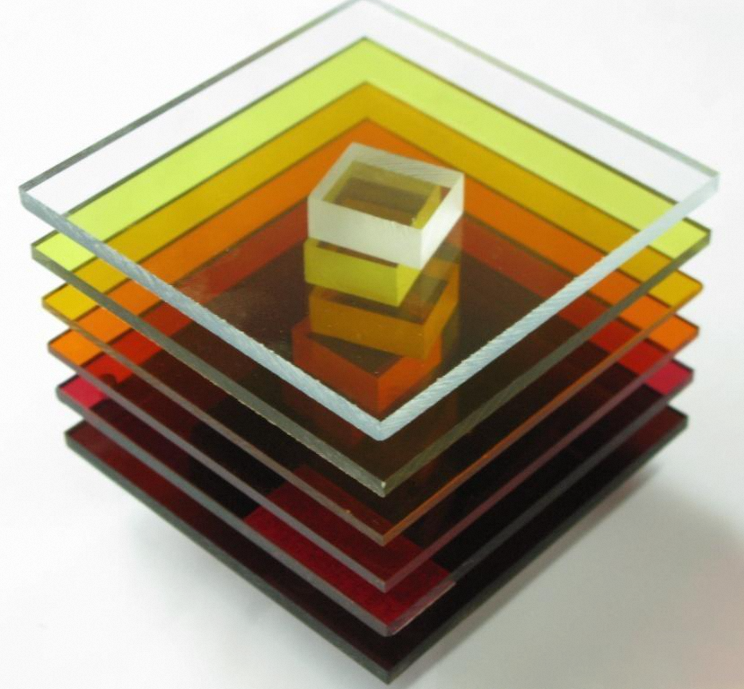What Are Acrylic Boards?
Acrylic boards are transparent, lightweight sheets made from a type of plastic called polymethyl methacrylate (PMMA). You might recognize them as a durable alternative to glass. These boards come in various sizes, colors, and finishes, making them suitable for a wide range of applications. Their strength and resistance to shattering make them a safer and more practical choice for many projects. You can use acrylic boards in construction, interior design, signage, and even product displays. Their versatility and adaptability have made them a popular material in modern design.
Key Properties That Support Sustainable Design
Acrylic boards offer several properties that align with sustainable design principles. First, their durability ensures long-term use, reducing the need for frequent replacements. This helps you minimize waste in your projects. Second, these boards are recyclable. You can repurpose or recycle them at the end of their lifecycle, contributing to a circular economy. Third, their lightweight nature reduces transportation emissions, as less energy is required to move them compared to heavier materials. Additionally, acrylic boards allow natural light to pass through, which can help you lower energy consumption by reducing the need for artificial lighting. These properties make acrylic boards an excellent choice for eco-conscious designers and builders.
Comparison with Traditional Materials in Terms of Sustainability
When compared to traditional materials like glass or wood, acrylic boards often prove to be a more sustainable option. Glass, while recyclable, is heavier and more fragile. Transporting glass requires more energy, and its breakability can lead to higher waste. Wood, though renewable, involves deforestation and may not always come from sustainable sources. Acrylic boards, on the other hand, are lightweight, durable, and recyclable. They also require less energy during production compared to glass. By choosing acrylic boards, you can achieve a balance between functionality, aesthetics, and environmental responsibility.
Environmental Benefits of Acrylic Boards
Recyclability and Circular Economy
You can contribute to a sustainable future by using acrylic boards, as they are recyclable. At the end of their lifecycle, these boards can be repurposed into new products. This process reduces waste and supports the circular economy. Recycling acrylic boards also minimizes the demand for raw materials, which helps conserve natural resources. By choosing recyclable materials, you actively reduce the environmental footprint of your projects. This approach aligns with modern sustainability goals and promotes responsible consumption.
Energy Efficiency in Production and Use
Acrylic boards require less energy during production compared to traditional materials like glass. This lower energy demand results in reduced carbon emissions, making them an eco-friendly choice. When you use acrylic boards in your designs, you can also enhance energy efficiency. Their ability to transmit natural light reduces the need for artificial lighting. This feature helps you lower energy consumption in buildings and other spaces. By incorporating these boards into your projects, you create designs that are both functional and environmentally conscious.
Durability and Waste Reduction
The durability of acrylic boards ensures long-term use, which reduces the need for frequent replacements. You benefit from their resistance to shattering and wear, making them ideal for various applications. This durability helps you minimize waste, as fewer materials are discarded over time. Additionally, their lightweight nature simplifies transportation, which lowers fuel consumption and emissions. By selecting durable materials like acrylic boards, you support sustainable practices while maintaining high-quality standards in your designs.
Practical Applications of Acrylic Boards in Sustainable Design
Eco-Friendly Architecture and Interior Design
You can use acrylic boards to create sustainable and visually appealing spaces in architecture and interior design. Their lightweight nature makes them easy to handle and install, reducing labor and energy costs. These boards allow natural light to pass through, which helps you design spaces that rely less on artificial lighting. This feature not only saves energy but also enhances the ambiance of interiors.
In architecture, you can incorporate acrylic boards into windows, skylights, and partitions. Their durability ensures long-term performance, even in high-traffic areas. For interior design, you can use them to craft furniture, decorative panels, or room dividers. Their availability in various colors and finishes allows you to achieve unique aesthetics without compromising sustainability. By choosing acrylic boards, you create designs that are both functional and environmentally responsible.
Retail and Marketing Solutions
Acrylic boards offer practical solutions for retail and marketing needs. You can use them to design eco-friendly signage, display cases, and promotional stands. Their transparency and smooth surface enhance the visibility of products, making them ideal for showcasing items in stores or exhibitions. Unlike traditional materials, acrylic boards resist wear and tear, ensuring your displays maintain their quality over time.
For outdoor advertising, you can rely on acrylic boards for weather-resistant signage. Their lightweight structure simplifies transportation and installation, reducing logistical challenges. Additionally, their recyclability aligns with modern sustainability goals, helping you promote your brand as environmentally conscious. By integrating acrylic boards into your retail and marketing strategies, you enhance both functionality and eco-friendliness.
Innovations in Product Design
You can explore innovative product designs using acrylic boards. Their versatility allows you to create items ranging from household goods to industrial components. For example, you can design lightweight yet durable products like tabletops, protective shields, or storage containers. Their resistance to impact and scratches ensures long-lasting use, reducing the need for frequent replacements.
In product design, you can also experiment with recycled acrylic boards. These materials support the circular economy while maintaining the same quality as virgin acrylic. By incorporating recycled options, you contribute to reducing waste and conserving resources. Acrylic boards provide endless possibilities for innovation, enabling you to design sustainable products that meet modern demands.
Innovations in the Manufacturing of Acrylic Boards
Advances in Recycled Acrylic Materials
You can now find acrylic boards made from recycled materials, which significantly reduce environmental impact. Manufacturers have developed processes to repurpose post-consumer and industrial plastic waste into high-quality acrylic sheets. These recycled boards maintain the same strength, clarity, and durability as virgin acrylic, ensuring you don’t compromise on quality.
Recycled acrylic materials support the circular economy by reducing the need for raw resources. When you choose these materials, you help lower the demand for petroleum-based inputs, which are typically used in acrylic production. This shift not only conserves natural resources but also reduces greenhouse gas emissions. By opting for recycled acrylic, you actively contribute to a more sustainable future.
Sustainable Manufacturing Practices
The production of acrylic boards has seen significant improvements in sustainability. Many manufacturers now use energy-efficient technologies to reduce carbon emissions during production. For example, some factories rely on renewable energy sources like solar or wind power to operate machinery. These practices help lower the overall environmental footprint of acrylic board manufacturing.
Water conservation has also become a priority in the production process. You’ll find that many companies recycle water used in cooling and cleaning systems, minimizing waste. Additionally, advancements in waste management ensure that leftover materials from production are either reused or recycled. By supporting manufacturers that adopt these practices, you encourage the growth of eco-friendly industries.
Challenges and Opportunities in Scaling Sustainability
Scaling sustainability in acrylic board manufacturing presents both challenges and opportunities. One major challenge lies in the cost of adopting green technologies. Many manufacturers face high initial investments when transitioning to sustainable practices. However, as demand for eco-friendly materials grows, economies of scale can help reduce these costs over time.
Another challenge involves raising awareness about the benefits of sustainable acrylic boards. You can play a role by choosing and promoting these materials in your projects. Increased demand will push manufacturers to innovate further and expand their sustainable offerings.
Opportunities also exist in research and development. Scientists and engineers continue to explore new ways to improve the recyclability and energy efficiency of acrylic boards. By staying informed about these advancements, you can make more sustainable choices in your designs. Supporting innovation in this field ensures that acrylic boards remain a cornerstone of sustainable design for years to come.
Acrylic boards stand as a key material in sustainable design. You benefit from their recyclability, which supports eco-friendly practices. Their durability ensures long-term use, reducing waste in your projects. These boards also offer unmatched versatility, allowing you to create functional and visually appealing designs. Across industries, their applications demonstrate their ability to lower environmental impact while maintaining high performance. Continued advancements in manufacturing and recycling will further enhance their role. As you prioritize sustainable solutions, acrylic boards will remain an essential choice for eco-conscious design.

